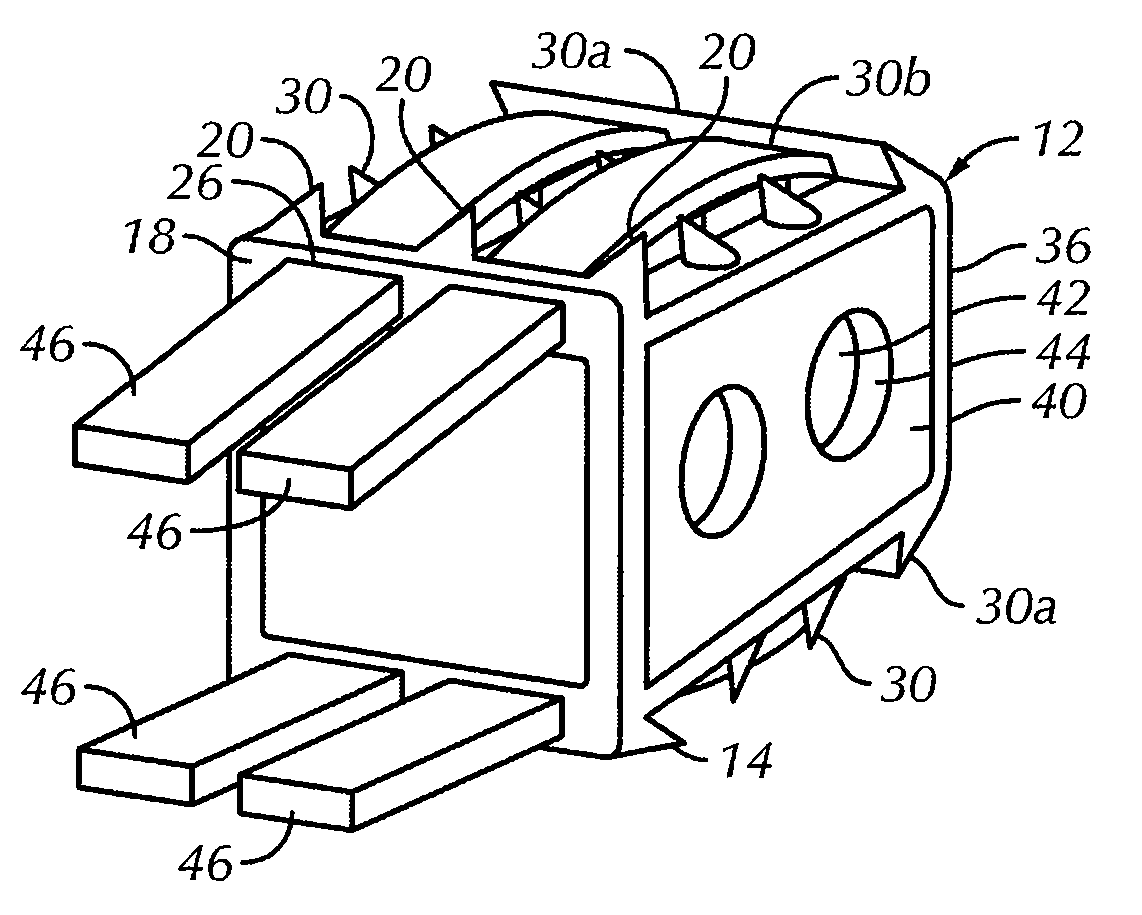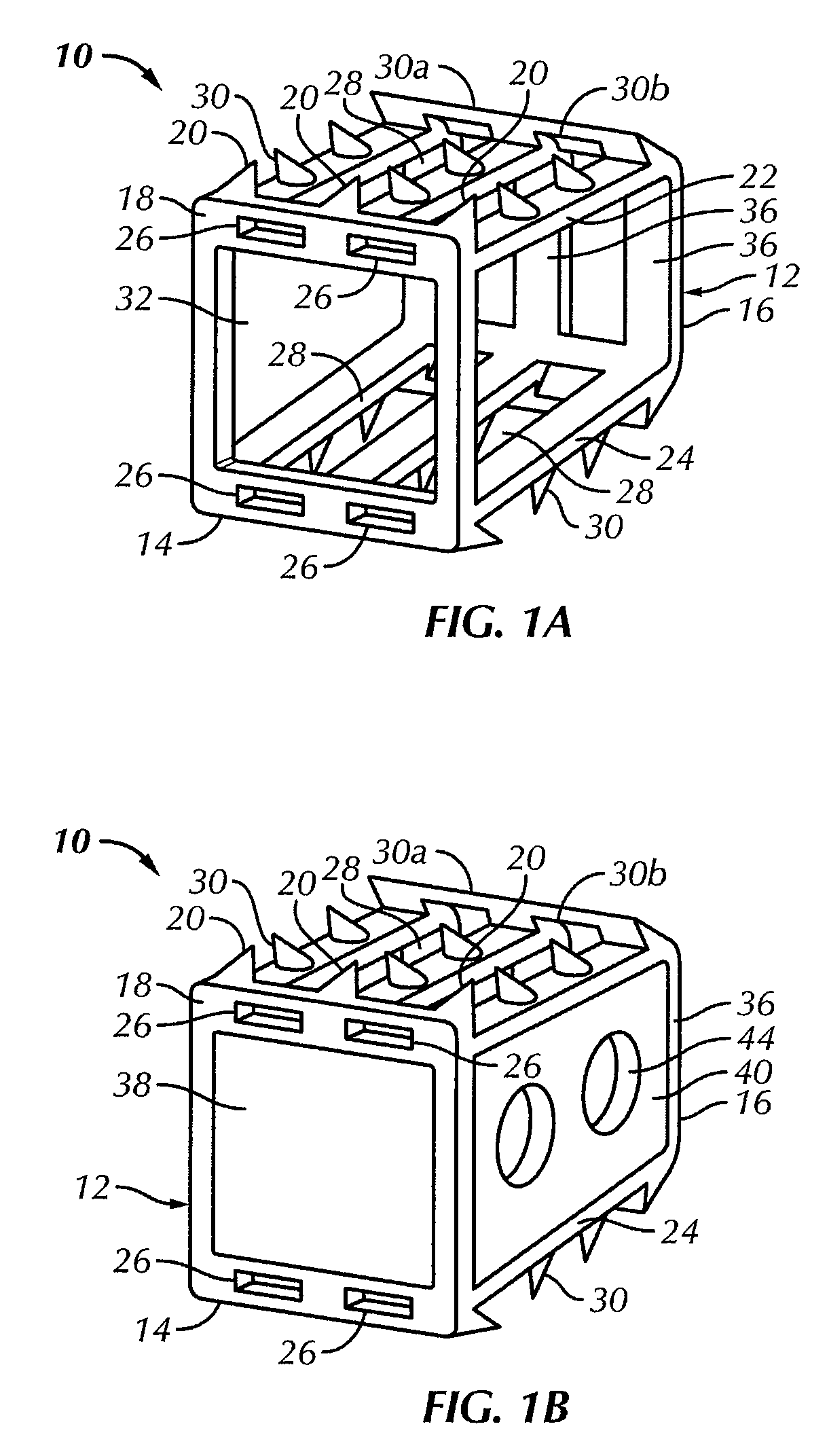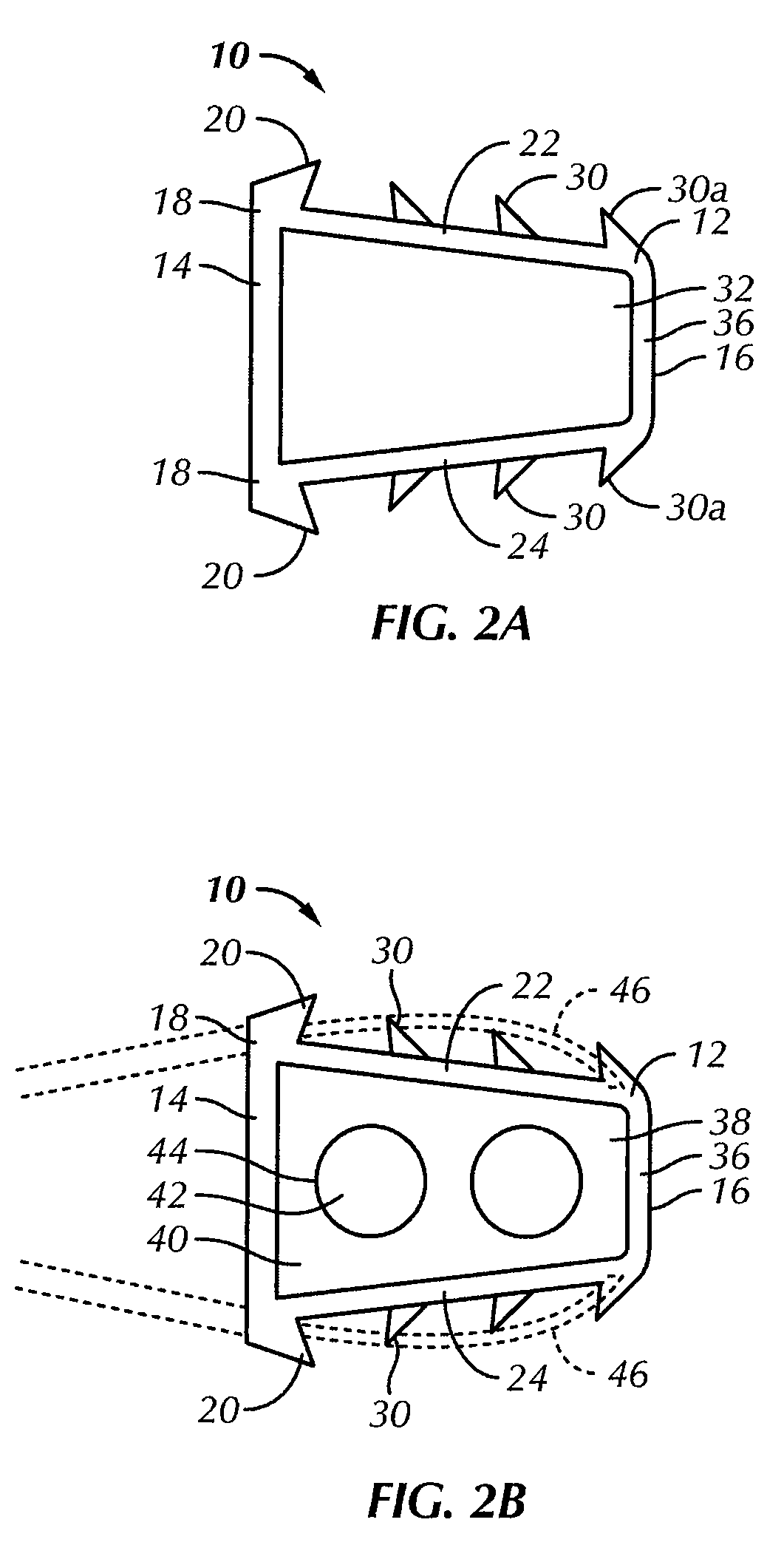Cervical fixation device
a cervical fixation and defect technology, applied in the field of cervical fixation or defect devices, can solve the problems of pain, deformity, stenosis of spinal canal or neuroforamina, and inability to fusion,
- Summary
- Abstract
- Description
- Claims
- Application Information
AI Technical Summary
Problems solved by technology
Method used
Image
Examples
Embodiment Construction
[0036]Certain terminology is used in the following description for convenience only and is not limiting. The words “right,”“left,”“lower” and “upper” designate directions in the drawings to which reference is made. The words “inwardly” and “outwardly” refer to directions toward and away from, respectively, the geometric center of a cervical fixation device in accordance with the present invention, and designated parts thereof. The terminology includes the words noted above, derivatives thereof and words of similar import. Unless specifically set forth herein, the terms “a”, “an” and “the” are not limited to one element but instead should be read as meaning “at least one”.
[0037]Referring to the drawings in detail, wherein like reference numerals indicate like elements throughout, there is shown in FIGS. 1A-5B a cervical fixation device, generally designated 10, 210, in accordance with first and second preferred embodiments of the present invention for insertion between a pair of adja...
PUM
| Property | Measurement | Unit |
|---|---|---|
| length | aaaaa | aaaaa |
| length | aaaaa | aaaaa |
| width | aaaaa | aaaaa |
Abstract
Description
Claims
Application Information
 Login to View More
Login to View More - R&D
- Intellectual Property
- Life Sciences
- Materials
- Tech Scout
- Unparalleled Data Quality
- Higher Quality Content
- 60% Fewer Hallucinations
Browse by: Latest US Patents, China's latest patents, Technical Efficacy Thesaurus, Application Domain, Technology Topic, Popular Technical Reports.
© 2025 PatSnap. All rights reserved.Legal|Privacy policy|Modern Slavery Act Transparency Statement|Sitemap|About US| Contact US: help@patsnap.com



